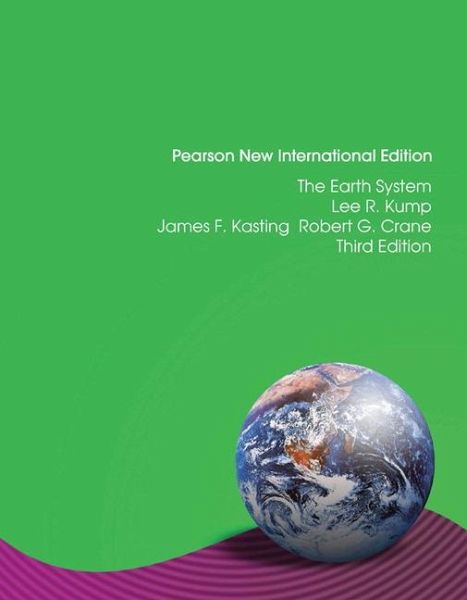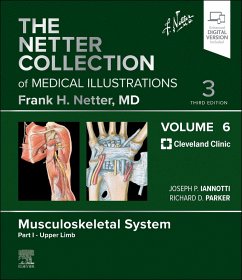
Earth System, The
Pearson New International Edition
Versandkostenfrei!
Versandfertig in 2-4 Wochen
125,99 €
inkl. MwSt.

PAYBACK Punkte
63 °P sammeln!
For courses in Earth Systems Science offered in departments of Geology, Earth Science, Geography and Environmental Science.
The first textbook of its kind that addresses the issues of global change from a true Earth systems perspective, The Earth System offers a solid emphasis on lessons from Earth's history that may guide decision-making in the future. It is more rigorous and quantitative than traditional Earth science books, while remaining appropriate for non-science majors.
Features + Benefits
• A Closer Look, Useful Concepts, and Thinking Quantitatively boxes address topical issues related to the material presented. They give students appealing visual and highlighted aids and isolates advanced, quantitative treatments for higher-level courses.
• The systems theory approach looks holistically at all that happens on Earth and the interactions of all that is here—such as the effect of weather on land, the effect of erosion on the ocean, the chemical changes that occur—and emphasizes that these processes do not happen in a vacuum.
• An emphasis on global change addresses such modern issues as global warming, ozone depletion, and biodiversity loss.
• A thorough treatment of Earth history provides a framework for developing a deep understanding of global problems while it explores analogous situations in Earth history.
• Extensive pedagogy in each chapter includes thought questions, a summary of important points, a list of important terms, and recommended general and advanced readings.
• Instructor's Resource Guide and Instructor's Resource CD-ROM are now standard instructor supplements with the text.
Glossary.
1. Global Change
2. Daisyworld: An Introduction to Systems
3. Global Energy Balance: The Greenhouse Effect
4. The Atmospheric Circulation System
5. The Circulation of the Oceans
6. The Cryosphere
7. Circulation of the Solid Earth: Plate Tectonics
8. Recycling of the Elements
9. Focus on the Biota: Metabolism, Ecosystems and Biodiversity
10. Origin of the Earth and of Life
11. Effect of Life on the Atmosphere: The Rise of Oxygen and Ozone
12. Long-Term Climate Regulation.
13. Biodiversity Through Earth History.
14. Pleistocene Glaciations.
15. Global Warming, Part 1: The Scientific Evidence.
16. Global Warming, Part 2: Impacts, Adaptation, and Mitigation
17. Ozone Depletion.
18. Human Threats to Biodiversity.
19. Climate Stability on Earth and Earth-Like Planets.
Appendix A: Units and Unit Conversions.
Appendix B: Temperature Conversions.
Appendix C: Periodic Table.
Index.
The first textbook of its kind that addresses the issues of global change from a true Earth systems perspective, The Earth System offers a solid emphasis on lessons from Earth's history that may guide decision-making in the future. It is more rigorous and quantitative than traditional Earth science books, while remaining appropriate for non-science majors.
Features + Benefits
• A Closer Look, Useful Concepts, and Thinking Quantitatively boxes address topical issues related to the material presented. They give students appealing visual and highlighted aids and isolates advanced, quantitative treatments for higher-level courses.
• The systems theory approach looks holistically at all that happens on Earth and the interactions of all that is here—such as the effect of weather on land, the effect of erosion on the ocean, the chemical changes that occur—and emphasizes that these processes do not happen in a vacuum.
• An emphasis on global change addresses such modern issues as global warming, ozone depletion, and biodiversity loss.
• A thorough treatment of Earth history provides a framework for developing a deep understanding of global problems while it explores analogous situations in Earth history.
• Extensive pedagogy in each chapter includes thought questions, a summary of important points, a list of important terms, and recommended general and advanced readings.
• Instructor's Resource Guide and Instructor's Resource CD-ROM are now standard instructor supplements with the text.
Glossary.
1. Global Change
2. Daisyworld: An Introduction to Systems
3. Global Energy Balance: The Greenhouse Effect
4. The Atmospheric Circulation System
5. The Circulation of the Oceans
6. The Cryosphere
7. Circulation of the Solid Earth: Plate Tectonics
8. Recycling of the Elements
9. Focus on the Biota: Metabolism, Ecosystems and Biodiversity
10. Origin of the Earth and of Life
11. Effect of Life on the Atmosphere: The Rise of Oxygen and Ozone
12. Long-Term Climate Regulation.
13. Biodiversity Through Earth History.
14. Pleistocene Glaciations.
15. Global Warming, Part 1: The Scientific Evidence.
16. Global Warming, Part 2: Impacts, Adaptation, and Mitigation
17. Ozone Depletion.
18. Human Threats to Biodiversity.
19. Climate Stability on Earth and Earth-Like Planets.
Appendix A: Units and Unit Conversions.
Appendix B: Temperature Conversions.
Appendix C: Periodic Table.
Index.
Dieser Artikel kann nur an eine deutsche Lieferadresse ausgeliefert werden.












